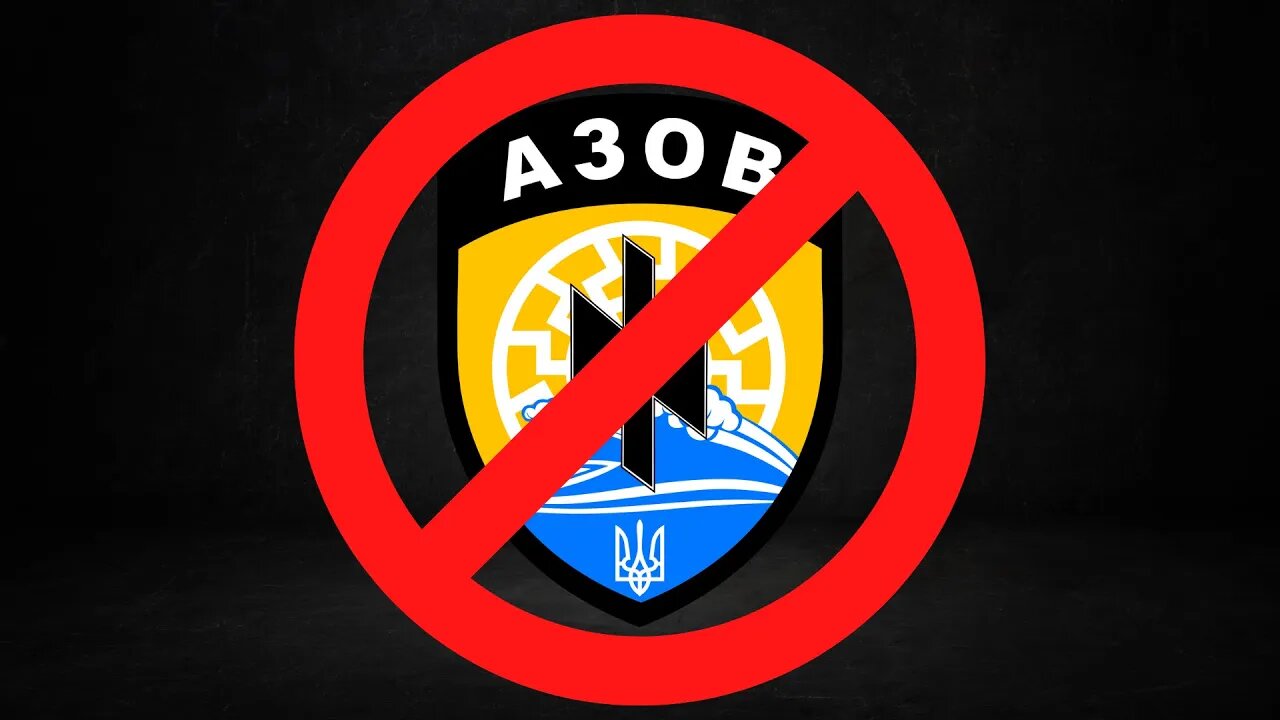Premium Only Content

Ukraine Is Fascist & The United States Is Funding Self Proclaimed Neo Nazis In The Azov Battalion
Dilyana Gaytandzhieva is a Bulgarian investigative journalist, Middle East correspondent and Arms Watch founder. Over the last years she has published a series of revealing reports on weapons supplies to terrorists in Syria, Iraq and Yemen. Her current work is focused on documenting war crimes and illicit arms exports to war zones around the world.
The Special Operations Detachment "Azov" (Ukrainian: Окремий загін спеціального призначення «Азов», romanized: Okremyi zahin spetsialnoho pryznachennia "Azov"), also known as the Azov Regiment (Ukrainian: Полк «Азов», romanized: Polk "Azov") and formerly the Azov Battalion[a] (Ukrainian: батальйон «Азов», romanized: Bataliyon "Azov"), is a unit of the National Guard of Ukraine formerly based in Mariupol, in the coastal region of the Sea of Azov, from which it derives its name.[10] The unit was founded in May 2014 as a volunteer paramilitary militia under the command of Andriy Biletsky to fight pro-Russian forces in the Donbas War, and was formally incorporated into the National Guard on 11 November 2014.[11][12]
The group has drawn controversy over its early and allegedly continuing association with both far-right groups and neo-Nazi ideology,[13] its use of controversial symbols linked to Nazism, and allegations that members of the group have participated in torture and war crimes.[14][15][16][17][18] Some experts are critical of the regiment's role within the larger Azov Movement, a political umbrella group made up of veterans and organizations linked to Azov, and its possible far-right political ambitions, despite claims of the regiment's depoliticization.[19][9] Others argue that the regiment has evolved beyond its origins as street militia, tempering its neo-Nazi underpinnings as it became part of the National Guard.[20][21][22] Since 2014, criticism of the Azov Regiment has been a recurring theme of Russian politics.[23]
The regiment's size was estimated 900 to 2,500 combatants in 2017–2022.[24][3] Most of the unit members are Russian speakers and come from the Russian-speaking regions of Ukraine, it also includes members from other countries.[11][25] In the wake of the 2022 Russian invasion of Ukraine, the regiment gained renewed attention, as one of the reasons given by president of Russia Vladimir Putin for the invasion was the 'denazification' of Ukraine, to remove the alleged control of the country by far right forces such as Azov. During the Siege of Mariupol the regiment played a prominent role in the city defense, and made its final stand at Mariupol's Azovstal steel plant.[26][27] Ending the siege a significant amount of regiment fighters, including the regiment's commander since 2017, Denys Prokopenko, surrendered to the Russian forces on the order from Ukrainian higher command.
Join this channel to get access to perks & the full episodes with each guest:
https://www.youtube.com/channel/UCubhMPKZ6C5LW9JSxkM0miA/join
-
 0:26
0:26
One American Podcast
1 year ago $0.03 earnedJoe Rogan Asks Bill Maher What Crimes Trump Is Guilty Of And He Can’t Answer
331 -
 24:24
24:24
Jasmin Laine
2 hours ago“Their BIGGEST Mistake Yet”—U.S. Officials TORCH Carney in Brutal Report
2096 -
 27:01
27:01
TheRoyaltyAutoService
6 hours agoAnother Shop Replaced The Timing Belt & Fuel Injectors On This Honda Pilot… Now It Has No Power!
39 -
 UPCOMING
UPCOMING
IsaiahLCarter
21 hours agoJonah O. Wheeler: In Defense of Reality || APOSTATE RADIO #026
60 -
 LIVE
LIVE
vivafrei
11 hours agoEp. 277: Russia Peace Talks! Trump D.C. Takeover Leads to Lawsuit! Heat Wave Lawsuit? AND MORE!
13,458 watching -
 LIVE
LIVE
MattMorseTV
1 hour ago $0.60 earned🔴Gaming Sunday🔴
299 watching -
 LIVE
LIVE
Rallied
32 minutes agoWARZONE SOLO CHALLENGES ALL DAY
120 watching -
 LIVE
LIVE
Nerdrotic
3 hours ago $1.58 earnedTransient Lunar Phenomenon: Deeper into the Mysteries of the Moon | Forbidden Frontier #112
566 watching -
 2:58:44
2:58:44
Barry Cunningham
1 day agoBREAKING NEWS: PRESIDENT TRUMP ABSOLUTELY TROLLS THE MEDIA! BIG WEEK AHEAD!
57.4K80 -
 1:37:28
1:37:28
Sarah Westall
3 hours agoReal Intel: Power Struggles Fueled by Blackmail, Surveillance & Coercion w/ Dr. Dave Janda
18.2K10